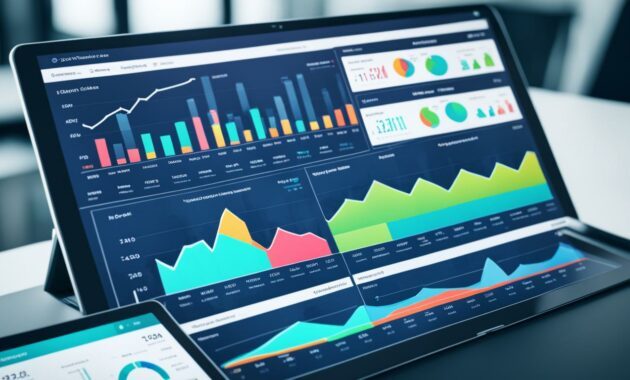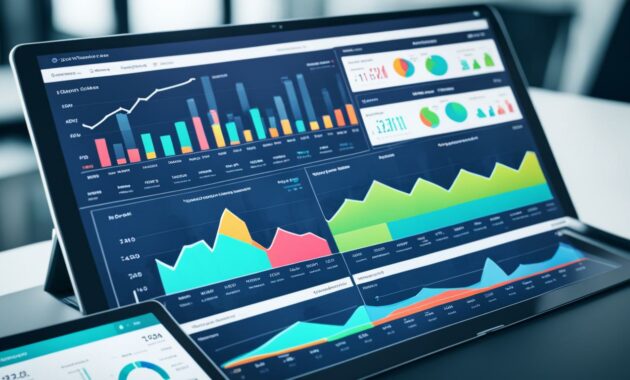
Insider Guide to Business Intelligence Software You Can Start Today
In today’s data-driven world, businesses are drowning in information. But data alone isn’t enough. To thrive, organizations need to transform raw data into actionable insights. This is where Business Intelligence (BI) software steps in. This insider guide will equip you with the knowledge to understand, select, and implement BI software. You can start using these tools to make smarter decisions today.
The power of BI lies in its ability to collect, analyze, and visualize data. It allows businesses to identify trends, spot anomalies, and predict future outcomes. This leads to better decision-making, improved efficiency, and increased profitability. This guide will help you cut through the noise and find the right BI solution for your needs. We’ll look at the core concepts and practical applications of Business Intelligence software.
Understanding the Fundamentals of Business Intelligence
Before diving into specific software, it’s crucial to grasp the core principles of BI. At its heart, BI involves a cyclical process. This process starts with data collection and ends with informed action. The cycle includes these key steps:
- Data Collection: Gathering data from various sources, such as databases, spreadsheets, and cloud applications.
- Data Warehousing: Organizing and storing data in a central repository for analysis.
- Data Analysis: Applying statistical and analytical techniques to uncover patterns and insights.
- Data Visualization: Presenting data in a clear and understandable format through dashboards and reports.
- Decision Making: Using insights to inform strategic and operational decisions.
Business Intelligence software is the tool that facilitates this entire process. It streamlines data collection, automates analysis, and creates compelling visualizations. Understanding this process is critical before choosing the right software.
Key Features to Look for in Business Intelligence Software
Not all Business Intelligence software is created equal. The best solution depends on your specific needs. However, certain features are essential for any effective BI tool. Consider these key functionalities when evaluating software options:
- Data Integration: The ability to connect to various data sources. This includes databases, cloud platforms, and on-premise systems.
- Data Transformation: Tools to clean, transform, and prepare data for analysis. This ensures data accuracy and consistency.
- Data Visualization: A range of visualization options, such as charts, graphs, and dashboards. This allows for easy data interpretation.
- Reporting: Customizable report generation capabilities. This enables users to share insights with stakeholders.
- Advanced Analytics: Features like predictive modeling and statistical analysis. These features unlock deeper insights.
- User-Friendly Interface: An intuitive interface. It should be easy for users to navigate and use the software.
- Mobile Access: The ability to access dashboards and reports on mobile devices. This improves accessibility.
- Collaboration: Features that enable users to share insights and collaborate on reports. This fosters teamwork.
Choosing software with these features will ensure that you are able to extract valuable insights. These features can help your business become more data-driven.
Top Business Intelligence Software Options to Consider
The market for Business Intelligence software is vast. Several excellent options cater to different needs and budgets. Here are some of the leading choices:
- Microsoft Power BI: A powerful and versatile BI platform. It offers a wide range of features. Power BI is known for its integration with other Microsoft products. It is a good choice for businesses of all sizes.
- Tableau: A market leader in data visualization. Tableau is known for its user-friendly interface and stunning visualizations. It is a favorite among data analysts and business users.
- Qlik Sense: A self-service BI platform. Qlik Sense offers data discovery and guided analytics. It is known for its associative data modeling capabilities.
- Looker (Google Cloud): A cloud-based BI platform. Looker is known for its data modeling capabilities. It is ideal for businesses that need a scalable solution.
- Sisense: A BI platform designed for complex data analysis. Sisense provides in-memory processing and offers advanced analytical capabilities. It is a good fit for businesses with large datasets.
When selecting a BI tool, consider your budget, data volume, and technical expertise. Evaluate each option carefully to find the best fit. Trial periods are often available. This allows you to test the software before committing.
Implementing Business Intelligence Software: A Step-by-Step Guide
Implementing Business Intelligence software requires careful planning and execution. A well-defined implementation strategy will increase the chances of success. Follow these steps for a smooth transition:
- Define Your Goals: Clearly define what you want to achieve with BI. Identify key performance indicators (KPIs).
- Choose the Right Software: Select the BI software that best aligns with your needs. Consider the factors discussed earlier.
- Prepare Your Data: Clean and organize your data. Ensure data accuracy and consistency.
- Implement the Software: Install and configure the BI software. Connect it to your data sources.
- Train Your Users: Provide training to your team. This is essential for effective software adoption.
- Create Dashboards and Reports: Design dashboards and reports that meet your business needs. Tailor them to your KPIs.
- Monitor and Refine: Continuously monitor your BI system. Refine your dashboards and reports as needed.
Successful implementation requires a collaborative approach. Involve stakeholders from different departments. This will ensure that the BI solution meets everyone’s needs. Consistent monitoring is key to optimizing the BI system.
Maximizing the Value of Your Business Intelligence Investment
Implementing Business Intelligence software is only the first step. To maximize your investment, you need to actively use the software. You also need to build a data-driven culture. Here are some tips to get the most out of your BI solution:
- Foster Data Literacy: Encourage data literacy throughout your organization. Train employees on data analysis and interpretation.
- Promote Data-Driven Decision Making: Make data the foundation of your decisions. Use data to inform strategy and operations.
- Regularly Review and Update Reports: Ensure your reports are relevant. Update them to reflect changing business needs.
- Seek Feedback: Gather feedback from users. Use it to improve your BI system.
- Stay Up-to-Date: Keep up with the latest BI trends and technologies. Explore new features and capabilities.
By following these tips, you can transform your organization into a data-driven powerhouse. You can make more informed decisions, improve efficiency, and drive growth. Data is a valuable asset. Make sure you are using it effectively.
The Future of Business Intelligence
The field of Business Intelligence software is constantly evolving. New technologies are emerging. These technologies are changing how businesses use data. Here are some trends to watch:
- Artificial Intelligence (AI) and Machine Learning (ML): AI and ML are being integrated into BI platforms. These technologies automate analysis. They also provide predictive insights.
- Cloud-Based BI: Cloud-based BI solutions are becoming more popular. They offer scalability, flexibility, and cost savings.
- Self-Service BI: Self-service BI tools are empowering business users. They allow them to analyze data without IT assistance.
- Data Democratization: The trend toward making data accessible to everyone. This allows for better decision-making.
- Real-Time Analytics: The ability to analyze data in real-time. This provides immediate insights.
Staying informed about these trends will help you stay ahead. Consider these trends when selecting and implementing Business Intelligence software. Embrace these advancements to gain a competitive edge.
Conclusion: Embrace the Power of Business Intelligence
Business Intelligence software is no longer a luxury. It is a necessity for businesses that want to succeed in today’s market. By understanding the fundamentals, choosing the right software, and implementing it effectively, you can transform your business. You can turn raw data into actionable insights. You can make smarter decisions and drive growth. This guide provides a solid foundation. You can begin your BI journey today. Take the first step towards a data-driven future.
[See also: The Benefits of Data Analytics for Small Businesses]
[See also: How to Choose the Right Data Visualization Tools]
[See also: The Role of BI in Modern Marketing]

